Our Water System
Have you ever wondered about the path water takes to get to and from your home? Follow the journey below.

Water Supply
About 75% of Arvada’s water supply comes from Gross Reservoir. The rest comes from the Clear Creek and Ralston Creek watersheds.

Water Treatment Plant
The City of Arvada has two water treatment plants: Ralston Water Treatment Plant, which operates year round and Arvada Treatment Plant, which runs during warmer months. Together the two plants produce over 6.4 billion gallons of drinking water per year.

Utility Billing
Over the next five years, the City will replace all water meters with smart meters allowing residents to view water usage before they receive their bill.
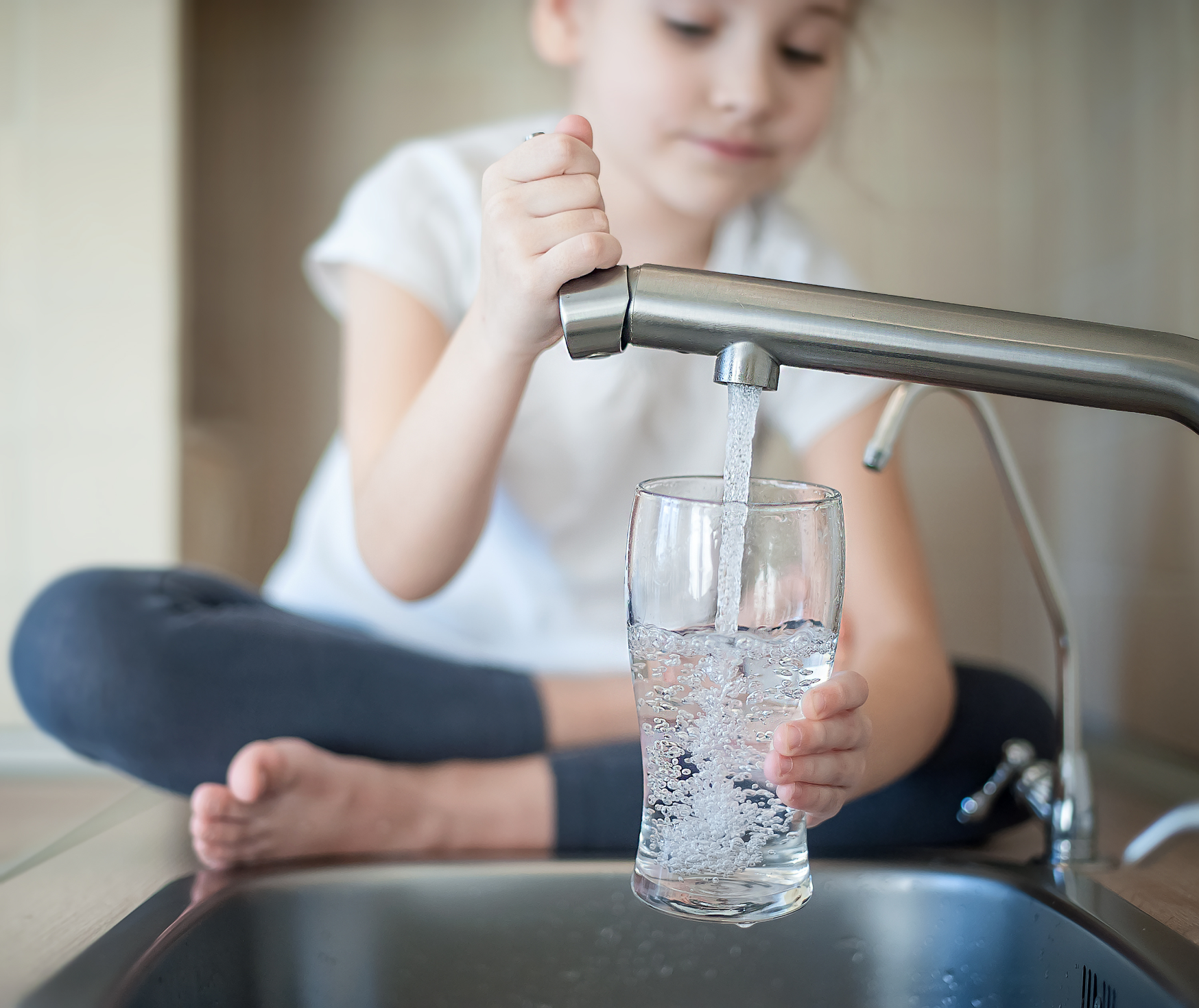
Water Delivery
The City maintains 632 miles of drinking water distribution pipes. Stretched end-to-end, the pipes would reach Des Moines, IA.

Wastewater
All the water that is flushed down the drain in Arvada flows to Metro Water Recovery treatment facilities in Denver. The regional plant treats all of Arvada’s wastewater. The majority of wastewater rates residents pay passes directly to Metro Water Recovery.
Key Terms
Water Treatment Plant
City owned and operated facility where raw water is processed and purified to deliver high-quality, clean, safe drinking water
Resiliency
The ability of a system to continue functioning amid and recover from a disturbance ranging from small mechanical failure to wildfire/flood/drought
Level of Service (LOS)
Written goals for the utility developed using industry standard criteria and customer expectations
Build-Out
The point in time where all developable land in the City has been developed
System Development Charge (SDC)
Fee paid by developers to add new water and sewer services to the City's system

 Water
Systems: There When You Need Them
Water
Systems: There When You Need Them
As an Arvada resident, you rely on your water and sewer utilities to be there when you need them. Turn on the tap and clean water comes out. Flush your toilet and wastewater leaves your house. And that is just the way the system should work!
That infrastructure requires regular maintenance and, at times, major investments in order to keep the system functioning 24 hours a day, 7 days a week, 365 days per year.
The City’s water and sewer systems date to the early 20th century with current components installed starting in the 1950s.
The City’s water and sewer systems are vast, with raw water components, two drinking water treatment facilities, over 600 miles of water pipe, and over 450 miles of sewer pipe.
Replacing and rehabilitating our vast water and sewer systems is paid for through customer rates and bimonthly service fees.
System Development Charges (SDC) are collected from developers to pay for the added capacity needed to connect new homes and businesses to our water and sewer systems. Once in the City system, these customers pay rates and bimonthly service fees like everyone else.

Funding Our Water Systems
Customers Pay for Upkeep, Developers Pay for Growth
Just like a homeowner spends resources on their home, the City invests in maintaining our infrastructure. This includes our water and sewer systems that deliver safe, clean drinking water and reliably dispose of that wastewater after use. Following the City philosophy that growth pays for growth, let’s take a look at how we make these investments!
Customer rates and fees fund the repair and replacement of systems due to general wear and tear. Developers pay System Development Charges (SDC) to pay for adding capacity to the existing system.
Rates increase to keep up with inflation, routine updates and repairs.
Service fees increased in 2022 for the first time in over a decade.
As we plan for the future, rates and fees will increase to support reinvestment in our infrastructure.
Examples Applied in Our Water System
Ralston and Arvada Water Treatment Plants, Storage Tanks and Distribution Pipes
Ensure water is properly treated to deliver clean, good tasting water.
Water Treatment Plant
Storage Tank
System Development Charges

Customer Rates and Fees
Two thirds or about 70% of project needs are repairs and replacement.
Developer SDCs
One third or about 30% of project needs are increased capacity needs.
Where Have We Been?
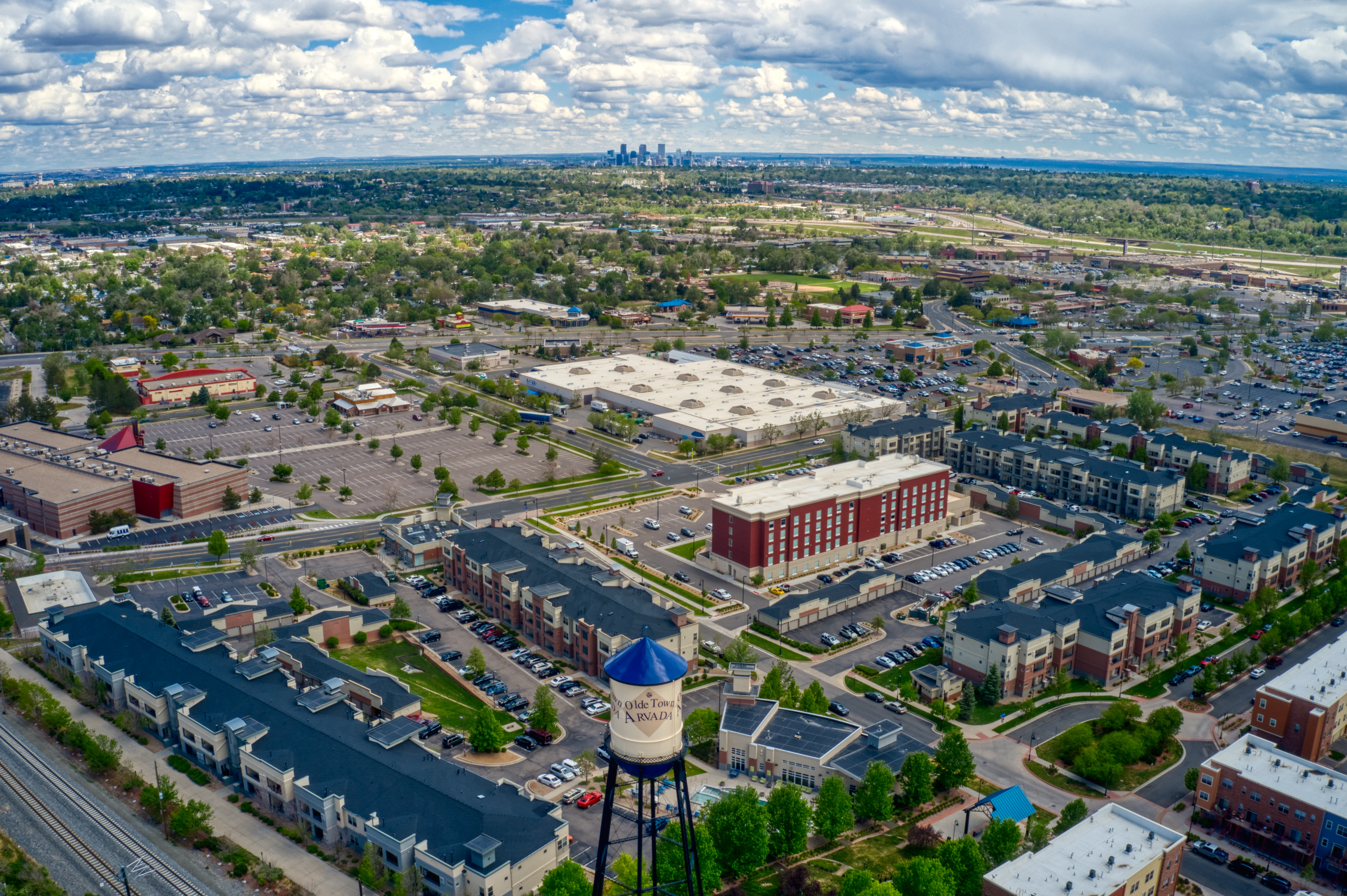
The Town of Arvada was formally incorporated on August 14, 1904, as a vibrant agricultural community. Through the 1900s and into the 2000s Arvada grew rapidly.
Arvada's population continued to grow in the 1960s and 1980s. Water leaders had the foresight to plan for this growth with additional infrastructure and necessary water rights.
Arvada leaders continued this type of planning in later years, and in the 2000s did additional planning to ensure water supply for the build out of the City.
City teams use processes of continual improvement and strategic planning to keep current and future needs at the forefront.
This helps ensure funding for immediate maintenance and improvement project needs while also projecting for the future.
This type of planning will continue in the years to come to ensure the reliability of our water and sewer systems.
Where are We Going?
 Following Council’s Vision and Direction
Following Council’s Vision and Direction
The City Council Strategic Plan 2020-2025 laid out guidance for the foundation of current and future community needs and drives the daily operations within the City.
The plan states that, to support infrastructure, the City of Arvada provides the community with a safe, reliable, high-quality water supply, drainage system, and sewer disposal services for full City build-out as defined by the Comprehensive Plan. This includes maintaining utility rates at lowest practical levels with accurate billing that supports replacement of aging infrastructure in order to maintain robust utility systems.

Master Planning
As part of the City Council Strategic Plan, City Council provided strategic direction to complete master plans for water, sewer and storm infrastructure by 2023. Master plans provide the City team with a roadmap to prioritize work that needs to be done in our water and sewer systems.
The infrastructure assets that the City built between the 1960s and 1980s provided reliable service for many decades. These assets are now in need of major rehabilitation and replacement to continue serving Arvada residents into the future. The City has worked together to secure additional funding for immediate project needs and will continue this process in the years to come to ensure the reliability of our water and sewer systems. To learn more about master planning, view presentations the City team has made to City Council and learn about next steps, visit arvada.org/utilities-transparency.
Deep Dive
Arvada’s Water Treatment Plants
Ralston Plant
Built 1962
Repairs and Upkeep that Have Taken Place over the years:
Three expansions with the latest expansions with the latest improvement in 2000
Ongoing rehabilitation project to prolong the life of the plant
Arvada Plant
Built 1979
Repairs and Upkeep that Have Taken Place over the years:
One expansion for capacity and several equipment updates
Used for seasonal use and has reached the end of its useful life
Seasonal plants age much faster, meaning this plant needs to be replaced sooner.
Water Treatment Plant Siting Study Goals
The City of Arvada Utilities Department’s mission is to provide safe and reliable drinking water, wastewater and stormwater collection, waste hauling, fleet management, mapping, and billing services to the Arvada community.
To achieve the goals for the water system we must address:
- Our aging infrastructure
- Ensuring level-of-service
- Resiliency for the future
Aging Infrastructure
Like many communities across the country, the City is facing challenges with aging infrastructure. The Arvada Water Treatment Plant was built in 1979. The average lifespan of a typical water treatment plant is 50-70 years.
- With aging infrastructure, parts of the existing plant can become difficult/impossible to replace.
- Additionally, as technology continues to improve and adapt, the current system’s technology has become difficult to repair and parts are no longer available with the technology and updated regulations.

Resiliency
The City is planning for resiliency well into the future.
- Resiliency goals change as the City grows – when these plants were built, resiliency was not a concern in the same manner it is today.
- The replacement water treatment plant will be a “Resiliency Replacement” for the current Arvada Plant.
- As a “Resiliency Replacement," there will also be the ability to add additional capacity as needed.

Level of Service
The City developed numerous criteria to define the accepted level of risk to provide acceptable level of service to all customers and plan toward the goals of the City.
These goals are based on industry standards, best practices, and/or regulatory requirements.
LoS Criteria
- Water rights and raw water supply
- SCADA and Controls
- Raw water infrastructure
- Potable Water Treatment
- Water Storage Tanks
- Pump Stations and PRVs
- Potable Water Pipe
- Water Meters and Backflow Prevention
- Collection Systems Pipe and Utility Locates
- Lift Stations
- Stormwater Pipe Drainages
- Stormwater Pipe Infrastructure
Site Selection Process
The City hired industry experts to help identify top sites for a replacement water treatment plant. The consultant used a nationally recognized process for site selection to identify top sites from a long list of potential sites.
This process starts with fatal flaw criteria and then uses criteria in community, engineering, and site characteristic categories to narrow the list. At each stage, new more detailed criteria are applied to the remaining list.
- Community criteria reflect the City’s values, such as protecting open space.
- Engineering criteria reflect items such as the difficulty to construct and energy use.
- Site characteristics reflect items that differentiate between sites such as ease of access from arterial roads.
This study was not just an engineering study, the team considered site characteristics and community values in each stage, such as economic impacts on development, environmental impacts, societal impacts, and potential impacts of open space. Each of these categories were weighted equally at each stage of the process.
Click image to expand

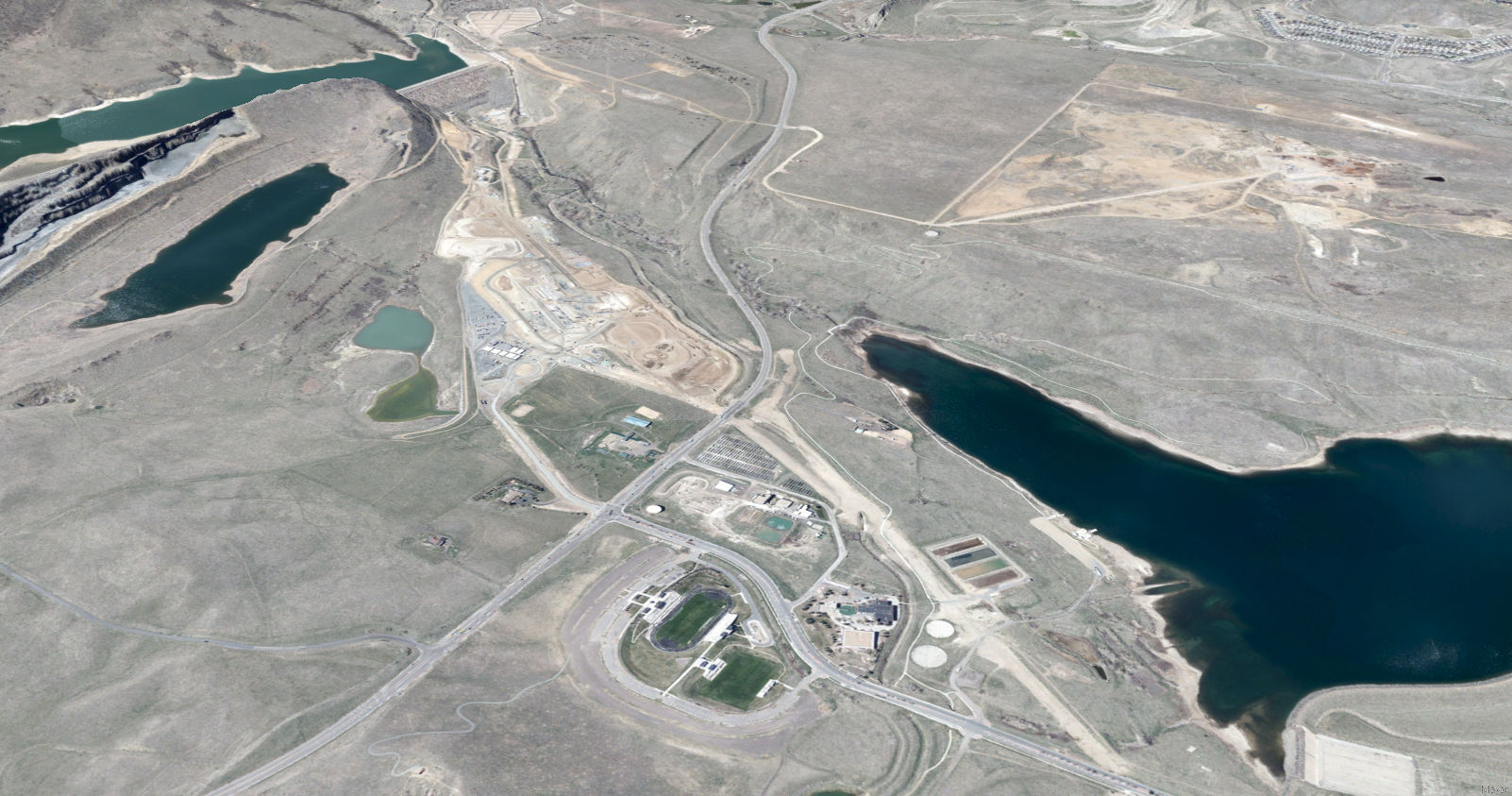
Original Sites Considered
38+ potential sites were originally identified in this area (based on fatal flaw criteria)
Click map to expand
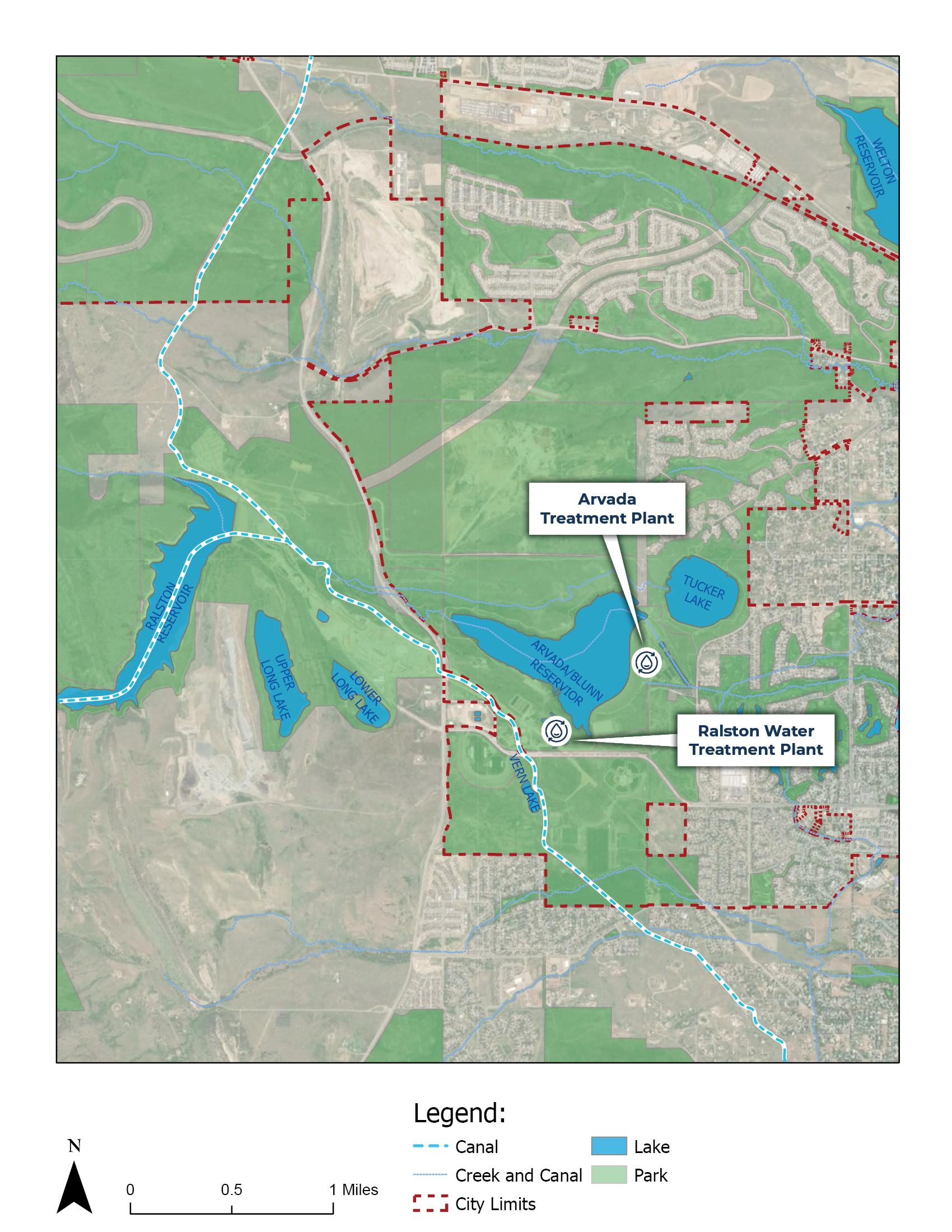
Evaluation Criteria
Community
Does not impact a community asset or local character: parks, open space, historical and cultural sites, established residential, schools, or viewscapes
Hover over each card for further information on criteria.
Parks and Open Space
Impact to public parks or open space
Historical and Cultural Sites
Impact to land that has been preserved due to historical or cultural heritage value
Established Residential Area
Proximity to land used mainly for housing
Schools
Proximity to early childhood, K-12, and higher education schools
Viewscapes
Impact to views from public lands, rights of way and residences
Engineering
Energy Consumption
Energy needed to deliver water to the plant and energy needed to deliver water to customers
Pipe Distance
The distance the pipe needs to travel from water source to the treatment plant and then on to delivery
Site Slopes
Amounts of terrain of the site that were geologically suitable and sound for a treatment plant
Raw Water Pumping
Preference for gravity to convey raw water supply to the plant (site is lower than water source)
Land Acquisition
The need to purchase land to build the new site
Site-Characteristics
Connects to Major Arterial Roads
Direct connection (or with minimal infrastructure) to a major road for construction, secure transportation and delivery of chemicals and other essential services to the plant
Planned development
Potential interference with potential development in the area
Climate Vulnerability
Location outside of the 500-year floodplain, limited vulnerability to wildfires, and other climate vulnerabilities
Wetlands
Potential impact to potential and existing wetlands
Site Specific Risks
The resilience of a site based on unique risks such as coal mines or sinking land
Process
Click to expand

Final Two Sites Selected For Public Comment
- East Side
- West Side
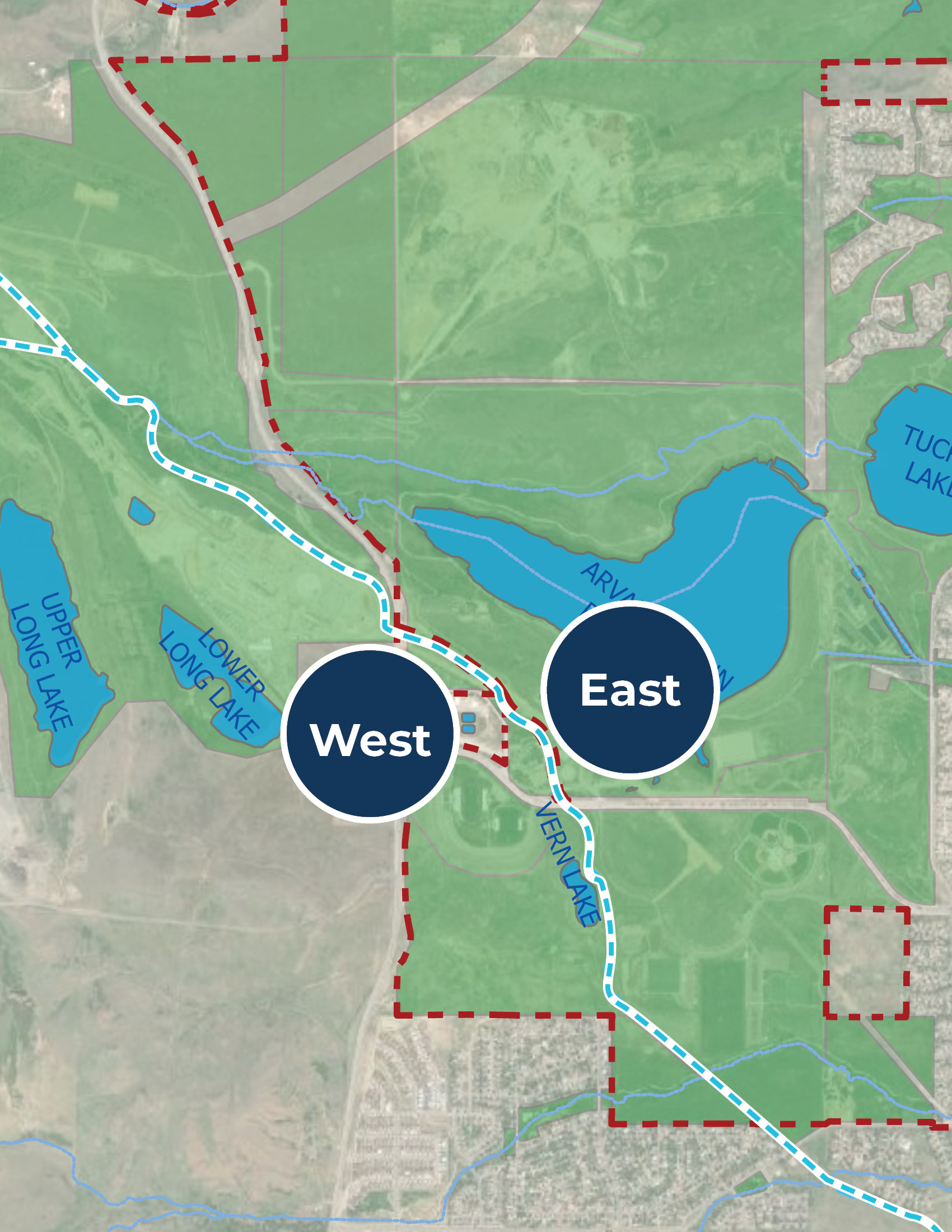
Aerial View East Site
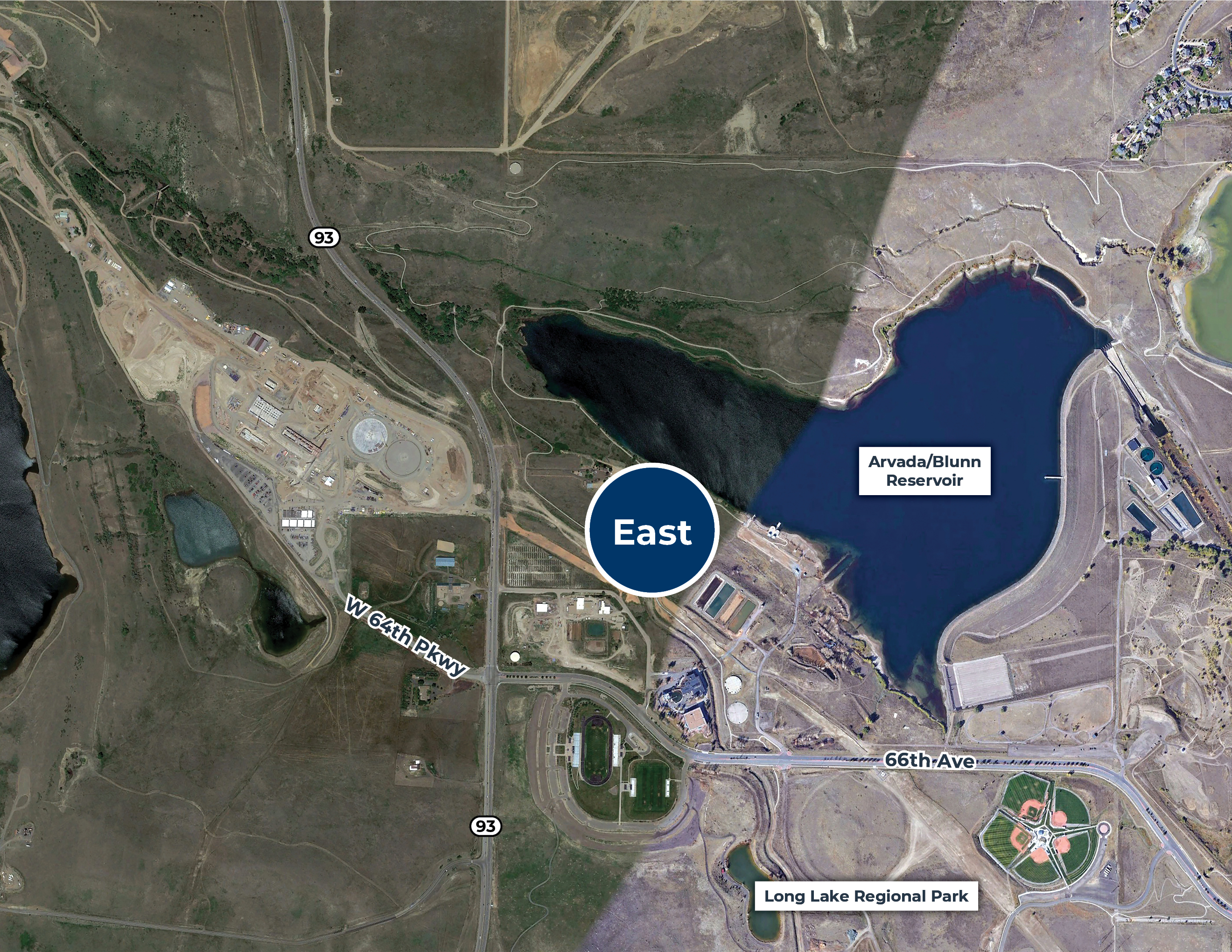
Aerial View West Site
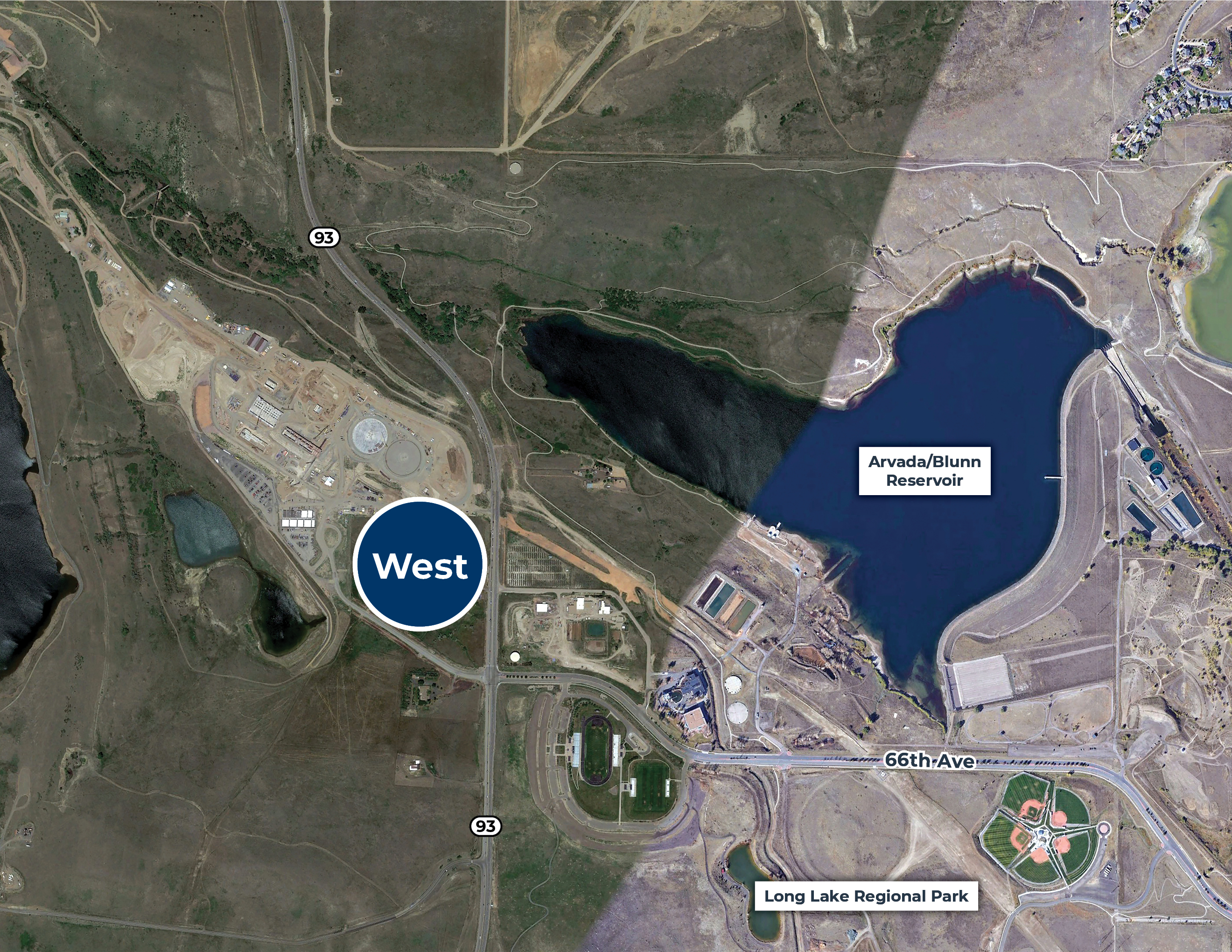


Water Treatment Plant Siting Study
The Arvada Water Treatment Plant is reaching the end of its useful life and needs to be replaced. Learn more about the locations being considered and share your feedback.